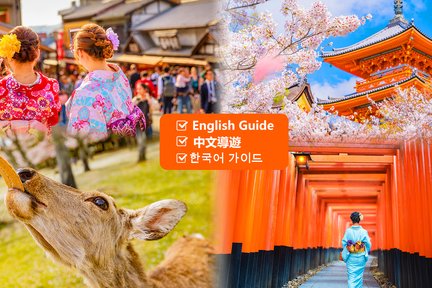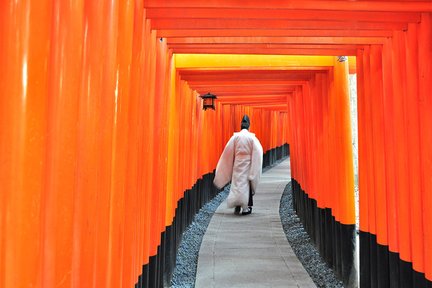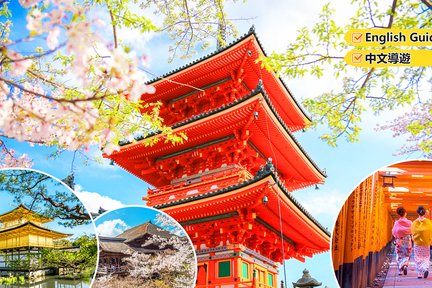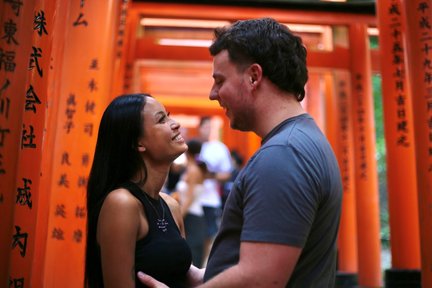Fushimi Inari Taisha
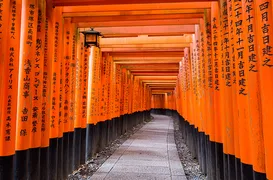
The best of Fushimi Inari Taisha
Bucket-list experiences
Make it a getaway
Trouble-free transport
All that's good & tasty
More to explore
Why people love Fushimi Inari Taisha
Nearby places to go
FAQs about Fushimi Inari Taisha
What is the best time to visit Fushimi Inari Taisha in Kyoto?
How can I get to Fushimi Inari Taisha from Kyoto Station?
What should I know about hiking at Fushimi Inari Taisha?
Are there any entrance fees for Fushimi Inari Taisha?
What dining experiences can I find near Fushimi Inari Taisha?
What to know before visiting Fushimi Inari Taisha
Remarkable Landmarks and Must-Visit Sights
Senbon Torii
Embark on an unforgettable journey through the Senbon Torii, where thousands of vibrant red torii gates create a mesmerizing tunnel-like path. This iconic spot, donated by Japanese businesses, marks the entrance to the sacred domain of the kami and offers a stunning visual experience perfect for photography. As you walk through this enchanting pathway, you'll feel the spiritual energy that has drawn visitors for centuries.
Torii Gate Tunnel
Step into a world of wonder as you walk through the famous Torii Gate Tunnel at Fushimi Inari Taisha. This breathtaking tunnel, formed by thousands of vermilion torii gates, leads you on a network of trails up the sacred Mount Inari. Each gate is a heartfelt donation from individuals or companies, with the donor's name inscribed on the back, symbolizing their wishes and gratitude. It's a must-see for anyone visiting Kyoto!
Main Hall (Honden)
Discover the heart of Fushimi Inari Taisha at the Main Hall, or Honden, where tradition and spirituality come together in a beautiful display of Shinto architecture. Visitors are encouraged to make a small offering to the resident deity, embracing the serene atmosphere and cultural significance of this sacred site. Surrounded by smaller shrines and altars, the Main Hall serves as a primary place of worship and a testament to Japan's rich spiritual heritage.
Cultural and Historical Significance
Fushimi Inari Taisha is a captivating destination with deep roots in Japanese history. As the most significant shrine dedicated to Inari, the Shinto god of rice, it has been a spiritual center since 711 AD. Visitors can explore its rich history, where people have long prayed for abundant harvests, business prosperity, and family safety. The shrine's cultural practices and historical significance make it an essential stop for anyone visiting Kyoto.
Local Cuisine
While exploring the scenic trails of Fushimi Inari Taisha, treat yourself to the local culinary delights. Savor the taste of Inari Sushi, a delightful sushi wrapped in fried tofu, and Kitsune Udon, a comforting noodle dish topped with sweetened fried tofu. These dishes are not only delicious but also carry cultural significance, as they are linked to the fox, the revered messenger of Inari.
Architectural Beauty
The architectural splendor of Fushimi Inari Taisha is a feast for the eyes. The shrine showcases the traditional Kasuga-zukuri style, with its main shrine offering a glimpse into Japan's architectural heritage. The impressive two-story entry gate, constructed by Toyotomi Hideyoshi, and the open view of the main object of worship, a mirror, are distinctive features that highlight the shrine's unique design.
Fox Statues
As you wander through Fushimi Inari Taisha, you'll encounter numerous fox statues, known as kitsune, which are believed to be the messengers of Inari. These intriguing statues often hold keys or jewels in their mouths, symbolizing their role as guardians of the rice granary and harbingers of prosperity. Their presence adds a mystical charm to the shrine, making your visit even more memorable.
